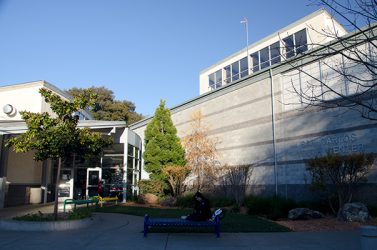Big caveat: I’m neither a doctor nor a virologist, although I’ve had the privilege of studying under and/or working with both and I did study molecular biology back in the Dark Ages (aka the 1970s). I’m writing this simply because I’ve realized there may be a pretty big gap in the average person’s understanding of how viral diseases differ from other illnesses and what that means for how society has to deal with them. Please take what you read here as a potentially useful starting point for further learning, and let me know where I’ve gotten something wrong.
How Do You Kill Something That’s Not Alive?
Curing an illness often involves killing or destroying some other living thing — a bacteria, a fungus — that’s causing harm as a result of living in or on you. Viruses also cause illness…but they’re a very different antagonist. Because they’re not alive in the way most of us think of as “life”.
Living things may need to be part of an ecology, a system, to thrive and prosper. But fundamentally they contain all, or almost all, of what they need to live inside themselves. They take in non-living nutrients, digest them, turn them into what they need, and discharge the rest.
Viruses have none of those capabilities. They are a set of instructions, encoded as chemicals, which, by themselves, can’t do any of the things we associate with life. They’re only “alive” when they’re operating inside a living cell.
How Do Viruses Get Into Living Systems?
So if viruses aren’t actually alive outside a living cell how do they get inside a living cell in the first place?
In addition to being a set of instructions viruses have one other important characteristic: they recognize doorways into certain living cells and sneak through them.
All animal cells are surrounded by a barrier called a cell membrane. Because the cell has to interact with the environment it has ways of getting stuff that’s outside of itself inside for processing. Small chemicals — water, oxygen — diffuse through the membrane. But larger ones either have to be enveloped and ingested by the cell or go through a “door”.
Since the cell doesn’t want random chemicals getting inside — it seeks to preserve a specific, particular environment to live — those doorways are set up to recognize certain chemical structures. Viruses carry chemical markers that act as fake IDs, tricking the cell into either ingesting them or letting them through the membrane.
If They’re Not Alive How Can They Cause Illness?
Pathological organisms — bacteria, fungi, whatever — aren’t intentional killers1. Instead, they are “just” living their own way…which happens to involve causing harm to some other living thing.
Some organisms evolve from “unintentional killers” to “helpful associates” as they and the organism they’ve invaded “learn”, through evolution, to live with each other. The E. Coli bacteria in our intestines are an example: they perform necessary services for us in exchange for us providing them with a protected environment in which to thrive2.
But, so far as I know, viruses are too simple, too “dumb” to perform useful services for organisms. All they can do is wreck havoc. They do that by doing the simplest thing life does: reproducing.
They can’t reproduce by themselves. Instead, they commandeer some other living thing’s systems. The instructions encoded in the virus override the cell’s built-in instructions, forcing the apparatus that normally creates the things the cell needs to live to create copies of the virus instead. This weakens and injures the cell and, eventually, when enough copies of the virus have been manufactured, destroys it. That releases the virus copies to re-enact the struggle in another cell.
It’s Like Fighting Yourself
This highlights one of the problems with developing medicines to “attack” viruses: because they’re only “alive” while they’ve corrupted your own cells into doing their bidding anti-virus medicines have to attack your cells to stop the virus.
That’s not impossible3 but it’s a formidable challenge. It’s not like attacking a bacterium, which is a different enough kind of living system that chemicals — antibiotics — can attack them without generally harming your own cells.
With viruses you’re really fighting yourself…which is tricky. It does no good to stop a virus if in the process you harm or kill the person it’s infecting.
So how does an organism deal with viruses? Why doesn’t the organism simply succumb to the first virus that comes along?
A Never-Ending Conflict
The answer depends on the fact that while a single cell can be easily overcome by a virus once it gets inside, in you those individual cells are part of a larger system, an organism, and the organism maintains systems to combat viruses.
I’m referring here to the immune system, which is comprised of a number of players: cells that produce chemicals (antibodies) to recognize “foreigners” (like viruses), cells to recognize cells which have become corrupted, and cells whose purpose in life is to eat anything that has been identified as “not us” or “no longer us”.
The way the immune system works is fascinating but not germane to what I’m outlining here4. And it doesn’t always work perfectly. Autoimmune diseases are examples of when it mistakenly identifies “self” as “non-self”5.
Once an organism has “learned” to recognize a particular brand of virus it becomes much more resistant to infection by that virus. Because as soon as any virus particle dares to intrude it is bound up by constantly-circulating antibodies and devoured by the first white blood cell that comes across it.
Vaccines work by teaching the immune system to recognize a particular virus without making the organism survive a viral infection. They do that by either being a permanently-inactivated virus (i.e., one mangled enough so the viral chemical package can’t function but is still recognizable as “that virus”) or, better yet, by being parts of the virus chemical package that your body can recognize as alien but which don’t contain the instructions for viral reproduction.
Why Quarantining Works
But developing and certifying vaccines takes time. So how can we treat a viral infection for which we have not yet developed a vaccine and which is “new” to enough peoples’ immune systems that it’s infecting large numbers of people?
One thing we can do is keep infected people alive until their own immune systems have defeated the virus. In the case of Covid-19 hopefully most of us will be able to do that with rest and basic care (e.g., “take anti-fever medicines and drink plenty of fluids”)6.
Not everyone will be so lucky. For them, we need to preserve as much of our medical/hospital system as we can, to give them the care they need while their bodies fight off the infection7.
But there’s something else we can do. And, appropriately enough, it uses one of the “advantages” of a virus against itself: quarantine, either organized or by individuals curtailing their social interactions.
Remember, a virus is only really alive when it’s inside a living host. If we prevent the virus from spreading to new hosts it can’t reproduce; it’s not a normal free-living organism that can stay alive by itself. Quarantining breaks the cycle of infection.
If the virus cannot reproduce the overall infection can be curtailed even though not everyone has gone through the illness and developed immunity. People whose immune systems have defeated the virus won’t be creating and shedding more virus particles into the environment. Breaking the cycle of infection causes the epidemic to be curtailed.
Granted, curtailing the disease doesn’t actually eliminate the unliving virus particles that will still be around. But it buys us time, to help infected people to recover, to clean and sterilize places it might be lurking, and to develop a vaccine.
But we will always have to be vigilant. Because making something that’s not alive extinct is really hard8.
if you’ll pardon me for ascribing intention to something that’s not self-aware. ↩
Although they can cause serious harm if they escape that environment. ↩
The hijacked cell presents different signals to the organism it’s a part of, in part as a defense mechanism (“help! I’ve been taken over!”). ↩
But it’s worth further reading. ↩
I suspect that’s part of the price we pay for having to have a system that is hyper-vigilant to alien intruders. There are a lot of different viruses and bacteria and they constantly evolve. ↩
A senior state public health official said 80% of the people who have tested positive for Covid-19 show no or only mild symptoms. ↩
That’s one of the reasons the Fairfield Inn quarantine facility was set up: to avoid putting people in the hospital who can recover without that level of support, so the hospitals can be available to help the people who would be seriously harmed or die without additional support. ↩
It can be done. One of the greatest human achievements of all times (which hopefully actually was achieved; viruses are very adept at hiding) is highlighted in the start of a Wikipedia article: “Smallpox was [emphasis added] an infectious disease…”. ↩




























